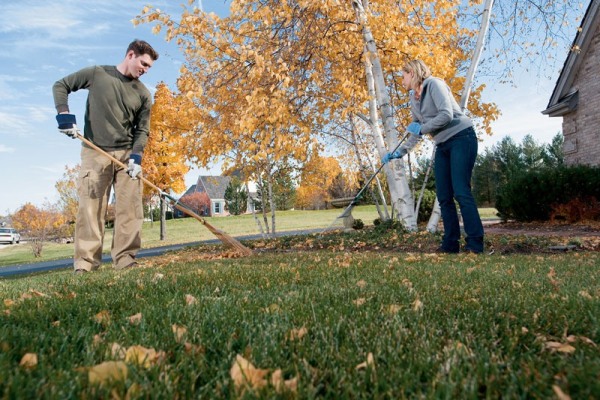
Over time, lawns can begin to look a little long in the tooth. Insect damage, weed infestation and drought can play havoc on a lawn. Many homeowners think the only solution to restoring a lawn is to spread new and expensive topsoil over the yard and then reseed it. The effort and cost required often is viewed as so prohibitive by homeowners that they just say the heck with it and continue to let the lawn go. That’s unfortunate because a beautiful lawn can really dress up the curb appeal and value of a home. In addition, restoring a lawn to its original beauty is much easier and cheaper to do than many homeowners realize.
How To Restore a Lawn
Start by raking and dethatching the lawn. Raking and dethatching the lawn lifts up the dead and matted-down lawn clippings that have worked their way down to the soil level. By raking and dethatching the lawn, sunlight, water, oxygen and fertilizer nutrients can work their way into the soil more easily.
After dethatching the lawn, apply a weedkiller to the lawn, and let it sit on the lawn for one to two weeks.
After the weedkiller has had a couple of weeks to work, mow the lawn down to about a 1-inch level.
Next, aerate the lawn using a coring aerator. You can rent core aerators at any tool rental facility. A core aerator has small, hollow and circular tines that remove small plugs, or cores, from the soil that are approximately a half-inch in diameter and several inches in length. Aerating the lawn helps to loosen the lawn soil and again enables sunlight, fertilizer nutrients, oxygen and water to penetrate the soil better.
After aerating the lawn, spread a light layer of compost material over the lawn. Usually a half-inch layer is all that is required. Compost material is rich in nutrients and helps to stimulate the soil to improve grass seed germination and lawn growth.
In addition to the compost material, apply an application of starter fertilizer on top of the soil. Finally, apply a grass seed over the restored lawn area, and then gently rake the grass seed into the compost and fertilized soil top coat. The raking action helps to cover the grass seed a little and works the compost, fertilizer and grass seed into the core plugs.
After raking in the grass seed, water the lawn thoroughly. Follow up daily with a quarter-inch of additional watering until the seed is germinated and up a couple of inches.
Restoring a lawn using this method is much less expensive and much easier. Within two to three weeks, your lawn should be on its way to looking beautiful again.
Once your lawn has been fully re-established, make sure to fertilize it several times a year. Also, apply at least once a year a fertilizer with a pre-emergent to control crabgrass growth. In addition, apply a grub killer once a year to prevent insect lawn damage.
This article was contributed by Mark Donovan.
 Related Articles & Free Subscription
Related Articles & Free Subscription
Garden Your Way to Better Health
The DOs and DON’Ts of Backyard Composting





Comment here